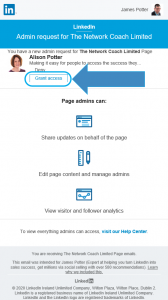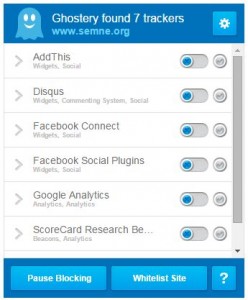
Completing an analysis of your competition before you open up shop is not only wise, it’s essential to staying in business. By monitoring your competition on an on-going basis, you’ll get to know their behavior, enabling you to anticipate their actions and stay one step ahead. As we well know, competitors are simply alternative options for your customers, and we want to make sure they pick you over everyone else.
Although performing a competitive analysis isn’t rocket science, it does go beyond completing a few simple Google searches like we did last week. Watch this week’s #SellMore video to learn how to not only identify your competitors, but also how to categorize them, dissect their website and understand their overall approach so that you may develop and sustain your competitive advantage.
Examine Their Website & The Customer Experience
Once you have identified some of your competitors, the first thing you’ll want to take a look at is their website. We’re going to dive into specific information around this, but take SOME time to examine top level items around overall website experience. Take a close look at the following items:
- How solid is their product photography? How do they display their products and help communicate details?
- How detailed are their product descriptions? What information do they include? What information is missing?
- Where are their call to actions throughout the online shopping experience? Are they obvious or do they get lost due to a poor color scheme or positioning?
- Are they trying to build an email list with a newsletter sign-up prompt? How prominent is it?
- Where are their social media icons positioned?
- Do they have a blog? How frequently do they post? What type of information do they tackle?
- Is their site optimized for mobile?
- What methods for contact do they offer? Do they have limited hours for phone support specifically?
- How long does it take them to respond to email, live chat and contact form submissions? Go ahead and test this yourself.
- Do they have an abandoned cart saver feature? If so, at what cadence do they send them out and what messaging is included?
- What information is included in their marketing banners and call outs? This may help you start to uncover their positioning within the market overall.
- How frequently are they running promotions? What benefits do those promotions provide to their customers and potential shoppers, as well as their business?
Again, these are just to get you started. Each website and industry will be different depending on the market they are trying to reach and the products or services they are working to sell. The goal here is to not only get a handle on their strengths and weaknesses, but to help you start thinking as a dynamic business owner as well.
Identify Their Market Positioning
By identifying your competitor’s positioning strategy, you’ll be able to start to get a feel for a number of variables related to your market’s demands and expectations. To do this, take a look at their overall messaging via website and marketing copy. Ask the following:
- What are customers really buying from them? Are they going for price? Experience?
- How are they differentiating their product from their competition? What features and benefits do they highlight the most in their marketing copy?
- What makes their product or service unique (according to them)?
Completing this practice will help you start to understand who your competitors are speaking to and how they position themselves within their industry and the overall market. This is going to pay dividends as you work on how you’ll position yourself against or alongside them when you open your own online store. If you’re struggling or just seeking as much information as humanly possible (as you should) be sure to:
- Sign up for their newsletter: get an understanding of their business and examples of communication
- Subscribe to and follow their blog: see what types of content they are covering and at what cadence
- Follow them on social media: get a feel for how they speak and serve their customers via social media
- Purchase a product: check out the product itself, but also note the time it takes to ship and how their packaging looks
- Put an item in your cart and abandon the checkout process: monitor whether or not they send an abandoned cart email series and what language and structure they use within their emails
Take a Peek at Pricing
Your pricing strategy is going to be one of the most important aspects of your online business and there are several of factors to be considered when setting prices for your products. However, at this point in time, start by taking a look at how your competitors have priced their products. You’ll learn what your target market is willing to pay and get an understanding of what prices will be best for you to set for your business.
Now, your prices don’t have to necessarily be less than your competition. You’ll want to take the information from the section above on market positioning and figure what it is you’re actually selling to your customers. Your target market (which we will discuss at a deeper level in a future post) may be willing to pay more for peace of mind, expedited shipping or just overall website experience.
Please remember to consider all the research you’ve been completing around general startup and business costs as we’ve walked through in previous posts.
Problem Solve for Shipping
As with pricing, at this point in time, you’ll just want to gather intel as to how your competition is solving for shipping, as well as how they communicate expectations around shipping. As we know, shipping is a top reason for cart abandonment during the checkout process. Therefore, having reasonable shipping costs that also stack up to the rest of your online competition is going to be pivotal in your online store’s success.
If you cannot stack up your shipping prices against your competitors at the start, what little things can you offer or do differently to set yourself up for success, i.e personalization, gift cards, etc.?
Take a Temperature Check with Reviews
This is just a no-brainer. Take the time to find as many reviews of your competitors as humanly possible. This can include everything from product reviews on their website to business reviews on social media to comments left on their blog. Get a temperature check from their audience as to how healthy and client-centric their business is and mark this down as a strength or weakness you can capitalize on.
Also, if you’re finding lots of reviews of a similar product to one you will also sell, this is a good sign since people are obviously quite interested in buying it. However, if you’re finding reviews where customers aren’t happy with the service your competitor provided, the condition in which the product arrived or just the quality of the product, this could be an area of focus for you to help differentiate your business.
Complete a Social Media Analysis
Taking a look at your competitors’ social media following has a plethora of benefits. If they have many followers, and especially if they are actively engaged (by liking, commenting and sharing posts), this is a good sign that a market for your product exists. Plus, you are going to get a great temperature check on how their customers feel about their business. You’ll also see some great examples of what works well and what doesn’t work so well when engaging with your client base.
However, if they’ve got a great following and overall engagement that means you’ll be needing to step up your game and come up with a new way of engaging this market or choose a different mix of customers all together.
Now, if your competitors don’t have a decent following, that could indicate the market is weak, your target market doesn’t use social media, or just simply that there is room for your business to take the lead at engaging with customers. So, take a look at all of the social media channels you can think of from Pinterest to Facebook, Reddit to Twitter and ask:
- What is their social media presence like overall?
- Which social media channels do they use the most?
- How do they speak with their client base?
- How often do they interact with their following?
- How frequently do they post something new?
- Which social media channels are they missing? Is there opportunity for you there?
- What are they posting?
- What % of their posts are about their business?
- What % is solely to increase engagement or gain followers?
Last but not least, check out some of the non-traditional channels as well. This could include things like knitting groups, forums, meetup groups, blogs and beyond.
Bonus Items and Tools to Complete a Competitive Analysis
- Get the gritty details: Want to know how long your competitors have been in business? How about the date they registered their domain, their contact information, server statistics and more? Check out WHOis.net and enter the URL of a competitor to uncover some infomative secrets.
- Watch if they’re hiring: Take a look on their store site and job search platforms to find out what kinds of positions they are hiring for, if any. This can help to indicate the health and status of their business plus, you’ll get a feel for the culture of their company.
- Find out about funding: Are they seeking additional funding? This could help to indicate the health of their business and give you ideas as to how to best position yourself when you’re seeking funding. Check out places like Indiegogo, RocketHub, Peerbackers and even Kickstarter to name a few sites with great reviews and track records.
- Get industry updates: With Google Alerts, you can receive email updates of the latest Google updates based on your queries. Although you should certainly set up alerts for your own store, it is a wise idea to set up alerts for your competition. You’ll save time and get details you couldn’t otherwise attain. Set up alerts for industry terms, and monitor the broader market for new developments that could affect your ecommerce business.
Remember, this process can and should evolve over time, and you will want to complete a regularly scheduled competitive analysis. This doesn’t mean you need to watch your competitor like a hawk and let them keep you up at night, but you will want to keep tabs on how their business is changing and what other competition emerges.
Tune in next week as we continue to dive into specific areas that tend to get folks hung up when starting an online store!
(307)








